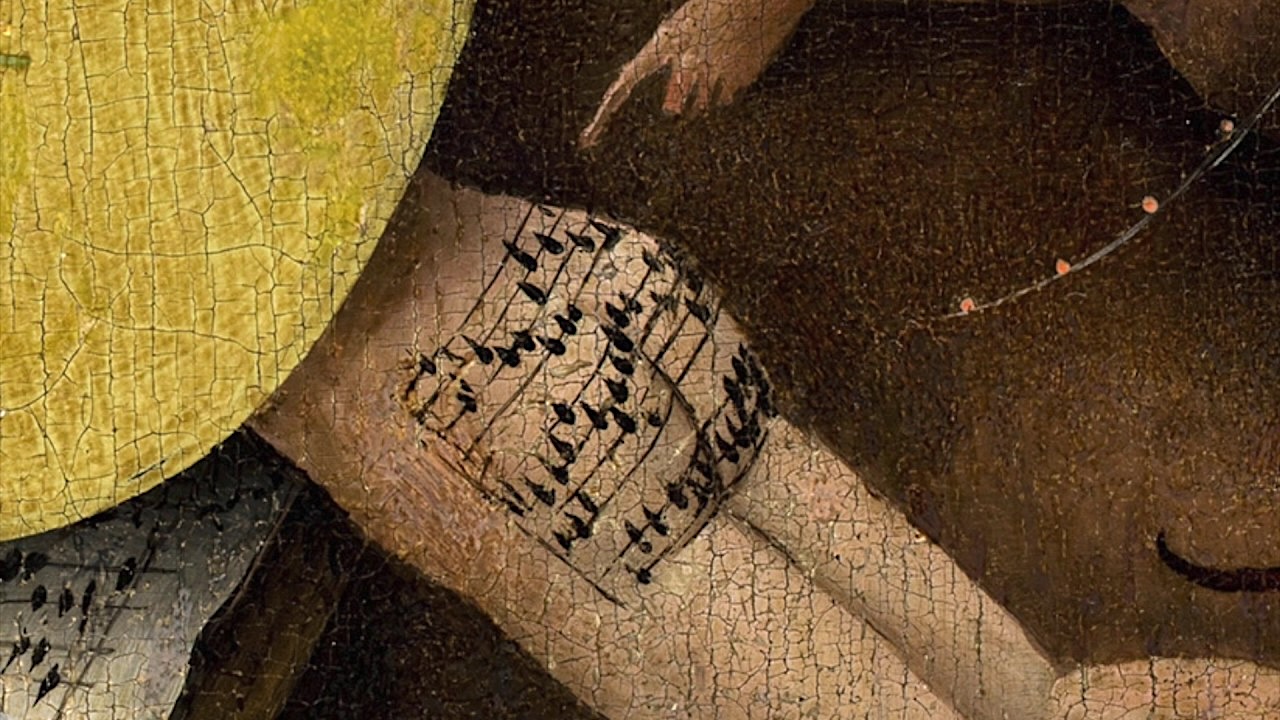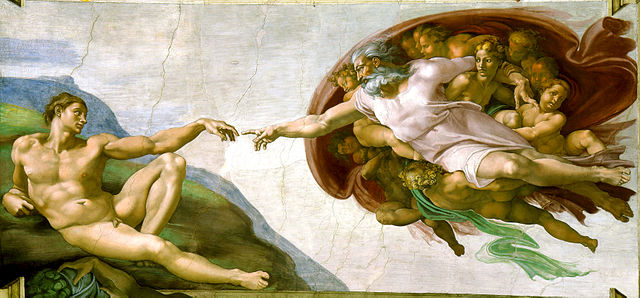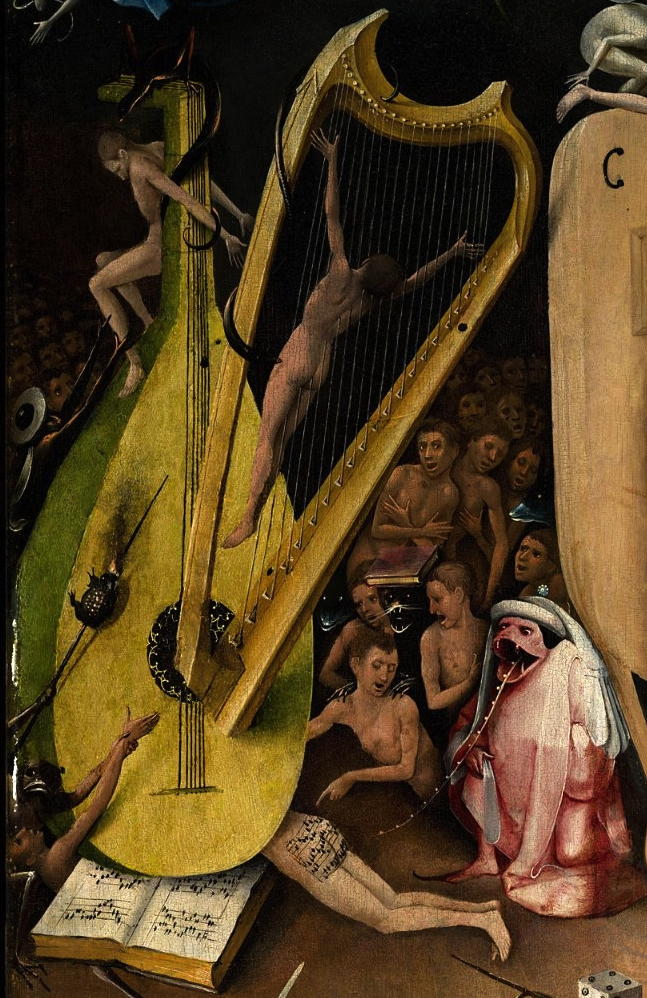There’s something unusually exciting about finding a hidden or discreetly placed element in a well-known painting. I can only imagine the thrill of the physician who first noticed the curious presence of a human brain in Michelangelo’s The Creation of Adam: God, his retinue of angels, and their cloak map neatly onto some of the main neural structures, including the major sulci in the cerebellum, the pituitary gland, the frontal lobe, and the optic chiasm. It’s hard to gauge Michelangelo’s motivation for doing so, but considering his documented interest in dissection and physiology, the find is not particularly surprising.
And then there’s another find. Several years ago, the Internet became excited when an enterprising blogger named Amelia transcribed, recorded, and uploaded a musical score straight out of Hieronymus Bosch’s The Garden of Earthly Delights, painted between 1490 and 1510. The kicker? Amelia found the score written on a suffering sinner’s butt.
The poor, musically-branded soul can be seen in the bottom left-hand corner of the painting’s third and final panel (below), wherein Bosch depicts the various torture methods of hell. The unfortunate hell-dweller lies prostrate atop an open music book, crushed by a gigantic lute, while a toad-like demon stretches his tongue towards his tuneful buttocks. Another inhabitant is strung up on a harp above the scene.
The piece, which Amelia transcribed and recorded, can be heard in the video above. It is… unusual. Although we can’t ascertain why Bosch decided to write out this particular melody, since scant biographical information about the painter survives, it’s possible that he decided to include music in his depiction of the inferno because it was viewed as a sign of sinful pleasure. For those who haven’t yet had a chance to hear it, listen to Medieval-era butt music here.

Ilia Blinderman is a Montreal-based culture and science writer. Follow him at @iliablinderman or at Google, or read more of his writing at the Huffington Post.
Related Content:
The Meaning of Hieronymus Bosch’s The Garden of Earthly Delights Explained




The same melody featured as point of departure for my Wind Band Composition “The Garden of Earthly Delights” ;-) https://www.youtube.com/watch?v=pR3xp3rtZKU
In my opinion the melody should be played backwards.
The unfortunate soul might have sat on a sheet of music.
I enjoyed your composition, thanks for sharing!
Looking at the panel, I think the first page in the book starts the song. The second page next. The end of the song is on the end of the man.…. Midevil humor lol.
sadly this interpretation of the notation in this painting – while compelling – is based on many incorrect assumptions…there’s a fascinating (but arguably less primed for bite-sized virality) three-part article that goes into excruciating detail about the foibles of trying to decipher it, if indeed it is possible at all! (it won’t let me post the link but the article is by Ian Pittaway on Early Music Muse and is called “Jheronimus Bosch and the music of hell. Part 1/3: The modern myth of Bosch’s butt music”)